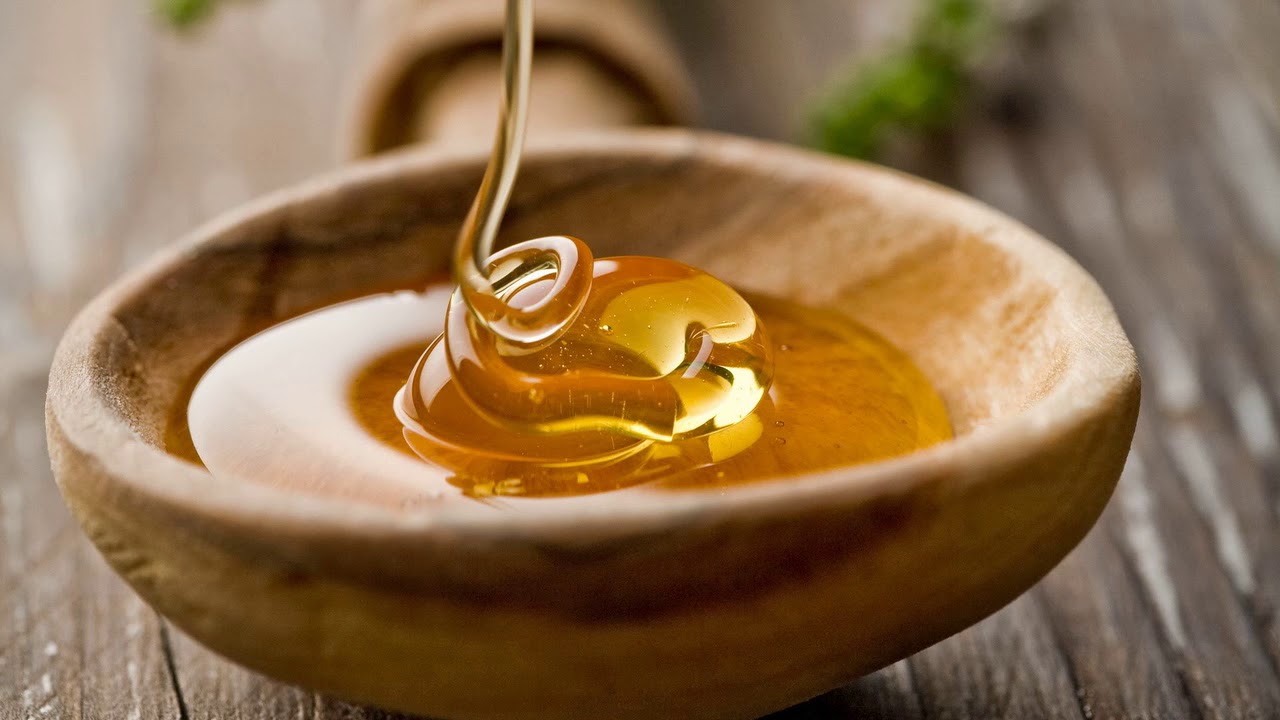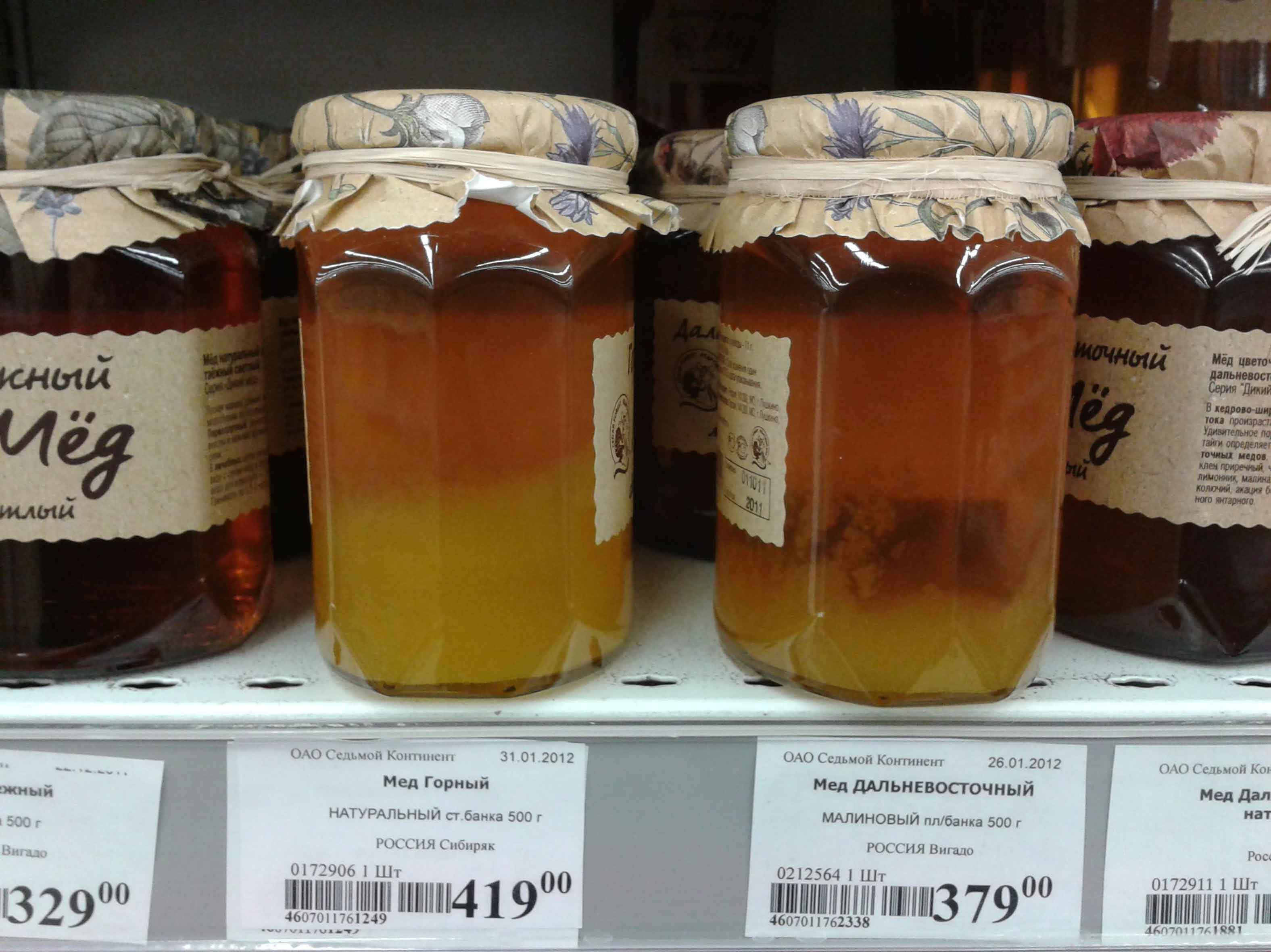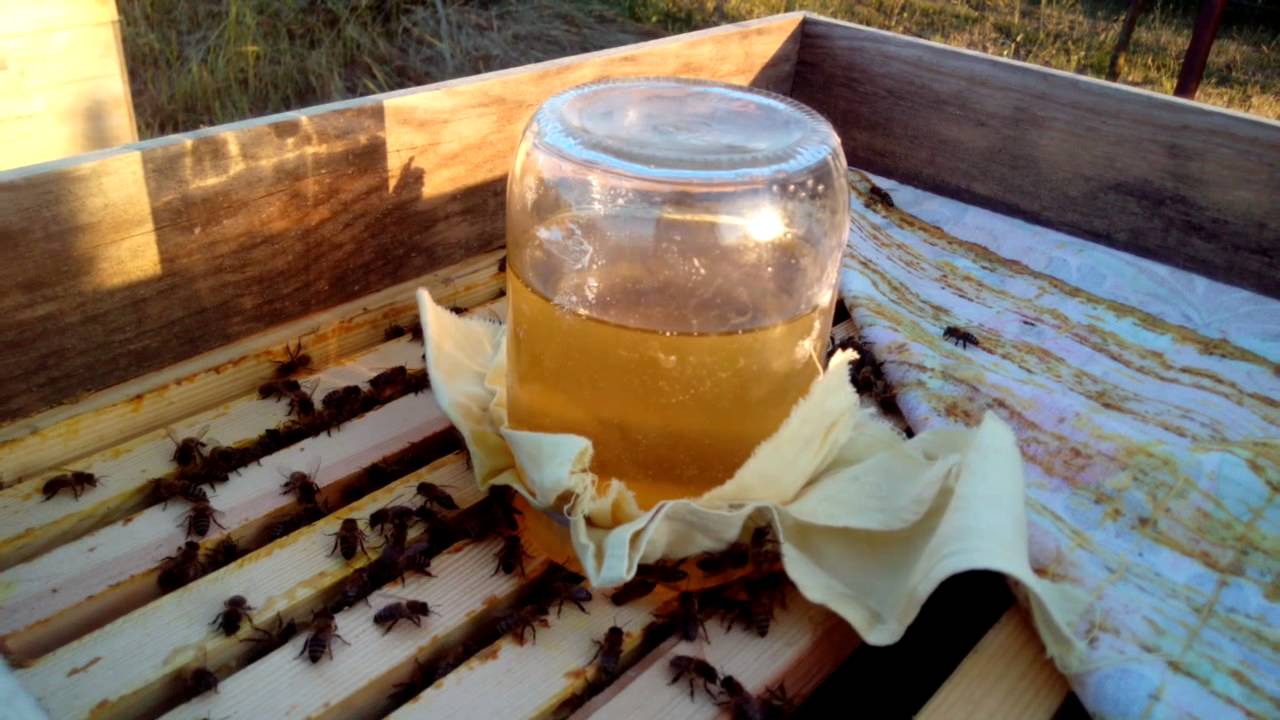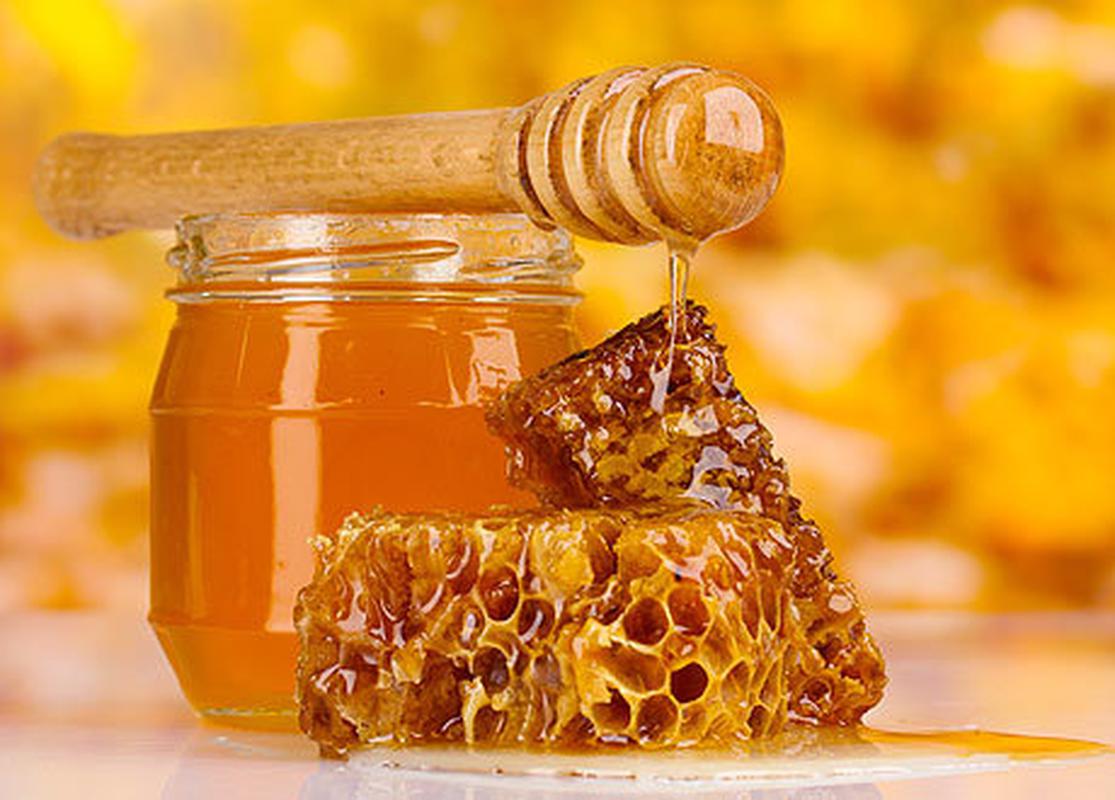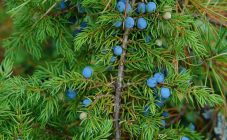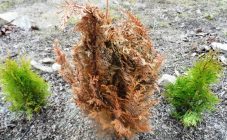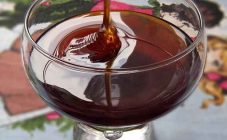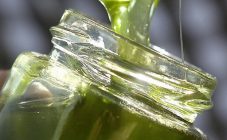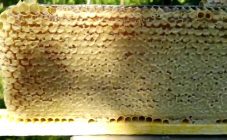Content:
Honey is one of the most valuable products that nature has given us. One can talk for a long time about its effect on the human body. It is tasty, healthy, it is often used in folk medicine, cosmetology, etc.
However, when deciding to buy honey, many are faced with the question of what the correct consistency of a natural product should be, and which honey is better to buy: liquid or thick.
Why is honey liquid
If the product is natural, then over time, almost all of its varieties should thicken and be sugared. This is because it contains glucose, which is responsible for crystallization.
Factors affecting crystallization
If the product was bought liquid, and after purchase it does not thicken for a long time or does not thicken at all, then the reasons may be as follows:
- the pitching was carried out at the wrong time;
- falsification of a product;
- varietal differences affecting the crystallization time;
- storage conditions of goods;
- feeding bees with sugar;
- the percentage of impurities.
Unripe honey
The percentage of water in the product distinguishes mature from unripe honey. Mature is a substance in which the reactions to convert complex sugars into simpler ones have already been completed.
Ready mature honey bees are sealed in combs with wax. Only when all the cells are sealed can the pumping begin.
If the beekeepers performed it in violation of the technology (pumping from unsealed honeycombs), and the honey turned out to be immature, then in this case it will be liquid. It contains more than 20% water (for comparison, in a flower - 18%). In order to distinguish ripe honey from unripe honey, you need to put the substance in a spoon and twist it. In this case, mature honey will wrap around a spoon, and unripe honey will drain from it like water.
Such a product cannot be stored for a long time, since after a couple of months it begins to ferment. Fermentation most often occurs at temperatures between 14 and 20 ° C.
The fermentation process can be noticed by the release of carbon dioxide bubbles, as well as the appearance of a specific smell.
If the humidity is above 23%, then the unripe material is placed in an open container, which is placed in a warm, well-ventilated, dry room for ripening at a temperature of about 40 ° C.
In the process of ripening, excess moisture evaporates, the total weight of the substance decreases. At the end of the process, the honey becomes ripe, but its quality is inferior to the product that was ripened in the hives.
Counterfeit
Another reason a liquid product is being sold on the market is counterfeiting.
Under the guise of natural, a surrogate product may be on sale. In this case, the jars contain either honey diluted with sugar syrup, or flower jam.
This liquid has no honey aroma and cannot crystallize.
If you put a spoonful of a natural product in your mouth and let it slowly drain down your throat, you will feel a slight burning sensation, which is also one of the signs of naturalness. The honey-like liquid will leave only a sweet aftertaste and nothing else.
For an organoleptic test, you can draw the substance on a spatula, raise it over the container and see how the trickle of the flowing liquid will behave. The counterfeit flows down quickly and the trickle of liquid is quickly interrupted.
In addition to counterfeiting with the use of natural products, counterfeit products made in the chemical laboratories of the Middle Kingdom come from China to the markets and shops of Russia. It is a powder that is diluted with a special solution to the desired consistency. Moreover, in appearance and taste, the finished mixture is difficult to distinguish from natural honey. Even with a superficial analysis in special laboratories, it is not always possible to immediately identify a fake.
Honey variety
Usually watery honey, which turned out during downloading, begins to solidify after about a month or two.
There are flowers, the collected honey from which will thicken for a long time.
These include:
- acacia;
- sage;
- cherry;
- chestnut.
Sunflower, rapeseed, buckwheat and other types of honey crystallize faster.
Why is very liquid honey sold in the markets, and is it possible to purchase a product of such consistency?
Freshly cut honey from buckwheat, linden, acacia, clover, fireweed is liquid and resembles water. If you immerse a spatula in a container filled with such a variety, then pull it out and allow the liquid to drain quietly, then after 2-3 minutes only a few drops will remain on the spatula. An unripe product behaves the same way.
Immediately after rolling, heather and honeydew honey has a very thick consistency and practically does not shimmer.
Therefore, if the time for buying honey is summer, then the product can be both liquid and thick. After the completion of the crystallization process, it will be solid. In order to get it out of the container, you need to make an effort.
Storage conditions
Honey is candied most quickly when stored in the temperature range from + 10 ° С to + 15 ° С. In the case when the temperature in the room is higher, it will take more time for thickening.
It will also stay liquid longer if stored in a humid environment. Warm and humid environments can ferment the food.
If, after all, the product is natural, but it does not thicken, then you can artificially thicken it. How to make natural honey thicker without using artificial thickeners?
For this you need:
- Take a teaspoon of old candied honey and a tablespoon of liquid honey.
- Stir this mixture.
- Pour it into a container with liquid and stir until smooth.
- Put the jar in a room with a temperature of + 10- + 15 ° С for a couple of weeks.
Almost all varieties of natural honey thicken in winter. Therefore, some sellers, in order to sell a thickened product, heat it up and it becomes liquid again, however, in this case, if heated incorrectly (above 40 ° C), the product may lose its medicinal properties. The overheated product loses the possibility of crystallization. At the same time, it acquires a darker color.
Sugar feeding bees
In some cases, beekeepers are forced to feed the bees with beet sugar.
This can happen:
- in spring when there is a shortage of fodder honey in combs;
- as a prevention of fungal diseases;
- as a stimulation of brood with a lack of flowering honey plants;
- in preparation for wintering to create food reserves.
However, some unscrupulous beekeepers feed the bees with sugar syrup to speed up the production of honey.
In this case, instead of processing the flower nectar, the bees place the processed sugar syrup in the combs. Such a surrogate also does not thicken for a long time. After hardening, large and hard crystals are formed in it.
Checking honey for naturalness
There are several ways to check the quality and naturalness of the product, for this it is not necessary to involve specialists.
Real honey should:
- Be stringy. When checking with a spatula, the stream should not be interrupted quickly. If it has a temperature of about 20 ° C, then you can lower a spatula or a teaspoon into it, remove it and start rotating it quickly. The natural product will wrap around the spoon and not drip. If you give it the opportunity to drain back into the container, then it should form a slide, and not spread out immediately. At the same time, small air bubbles will appear on the surface of the honey slide.
- Don't be watery. If you drop a little of the test liquid on paper, then the paper should remain dry around the drop.
- Sugar free. To check, you can use a lapis pencil, which is sold in pharmacies. A pencil should be dipped into an aqueous solution (5-10%). If the result is a white precipitate, then this is a fake.
- Do not contain foreign liquids. A chemical pencil will help to establish their presence. First, you need to spread some honey on the paper, then write a word through its layer. If after a while the inscription is well read or turns blue, it means that either water or syrup was added to the substance.
- Have a specific smell. Honey smell is difficult to confuse with another. Therefore, if the substance that is being sold has a purely floral smell or does not have it at all, this may mean that it is a fake on the counter.
- Free from impurities.
Unscrupulous sellers try to thicken honey that is too thin with starch and flour. An iodine solution can be used to detect them. It is necessary to dilute a little of the substance with water and drop a drop of iodine into the solution. If an impurity is present, the solution will turn blue.
To determine the presence of chalk, a little vinegar essence is added to the aqueous solution. If a reaction occurs, for example, the solution hisses, then such an additive is present in the product.
You can also identify additives by the presence of sediment. To do this, make a honey water solution, then let it settle a little. If after a while a precipitate appears in the glass, then this is evidence that the product contains insoluble impurities, which is also unacceptable.
What honey should be
Depending on the variety, honey can thicken quickly or remain liquid for a long time. At the same time, the consistency of the substance does not in any way affect its medicinal and nutritional properties.
Why do some varieties remain liquid? The density and rate of crystallization depend on the type of honey plants.
If the product contains a large amount of glucose and sucrose, then crystallization begins faster, if fructose, then slower.
This is due to the fact that glucose and sucrose crystallize easily, while fructose, on the contrary, enveloping these molecules, prevents crystallization. Therefore, if the substance contains a sufficient amount of fructose, then such honey will remain liquid for a long time.
At storage temperatures above 23 ° C, honey may not thicken completely even within a year. If this happened, for example, with acacia honey, then this is quite normal. At the same time, all the beneficial properties of the substance remain unchanged.
Approximate crystallization times for different varieties
| Variety | Crystallization time |
|---|---|
| acacia | 1-2 years |
| chestnut | 0.5-1 years |
| Greek (refers to the paddy species) | up to 1.5 years |
| May (very first) | 1-2 years |
Above we were talking about pure varieties, that is, varieties that are collected from honey plants of only one type. This is quite rare. Most often, bees collect nectar from several types of honey plants. Therefore, you can buy acacia honey, which thickens quickly enough. However, this does not mean that the product is falsified. This is possible if, for example, there were other melliferous flowers near the acacias, for example, rapeseed.Then, if the percentage of nectar collected from other plants is high, then the property of the finished product may change, and it will crystallize faster or, conversely, slower.
Liquid honey last year
This question is often asked by consumers who have purchased a natural product, but it has not crystallized.
If it is an acacia or chestnut variety, then maybe, since it takes more than a year for them to harden.
This also applies to honeydew varieties, which are formed when bees process sweet secretions of insects that live on the leaves of plants, or secretions on leaves or needles, which are formed during sharp temperature fluctuations (honeydew).
Thus, increased honey flow is not an indicator of product quality. If you have doubts after the purchase, then you need to check the quality of the goods in the ways described in this article.
